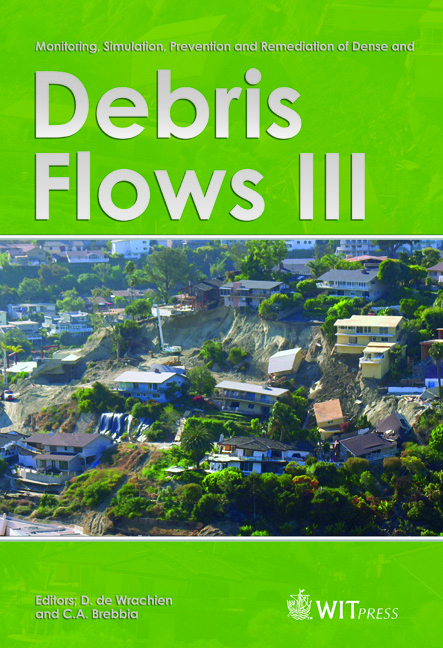Debris Flow Induced By Glacial Lake Break In Southeast Tibet
Price
Free (open access)
Transaction
Volume
67
Pages
11
Page Range
101 - 111
Published
2010
Size
2,857 kb
Paper DOI
10.2495/DEB100091
Copyright
WIT Press
Author(s)
Z. L. Cheng, J. J. Liu & J. K. Liu
Abstract
Debris flow caused by flooding of a glacier-lake break can result in major disasters in southeast Tibet. Based on field investigation and data analysis, this paper discusses the influences of climate factors on lake break. It is found that the break is inclined to occur after abnormal changes in climate, particularly at the turn from cold-wet weather to hot-dry weather. Debris flows due to glaciers will be more active in future decades. Keywords: debris flow induced by glacier-lake break, climate change, disaster, southeast Tibet. 1 Introduction Debris flow induced by glacial lake break has brought about tremendous disasters to lives and properties in southeast Tibet. For example, icefalls occurred widely on June 29, 1983, August 23, 1984, and July 20, 1985, blocking the glacier and forming temporary lakes. All three lakes finally broke and the flood created great debris flows, with peak discharge up to 2950, 5245, and 8195 (m3/s), respectively. They blocked the south Sichuan-Tibet highway for 270 days, destroyed 54 bridges, 8hm2 farmland, 22 houses, and 79 trucks, amounting to a loss of 2 million dollars (Fig.1). another event is the break of the Guangxiecuo lake, where the resulting debris flow entered the upper Palongzangbu River at a discharge of 1021.4m3/s and partially blocked the river, raising the water level up to more than 10m. The flow rushed down, destroying 42km highway, and suspending traffic for 200 days. It also washed out 18
Keywords
debris flow induced by glacier-lake break, climate change, disaster, southeast Tibet





